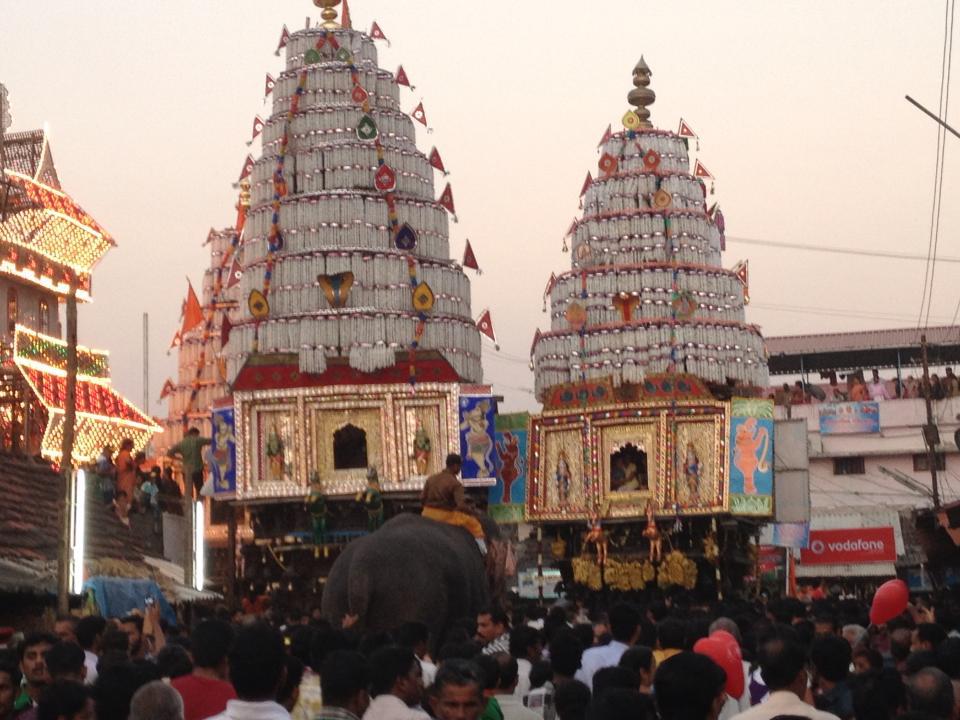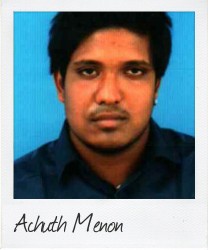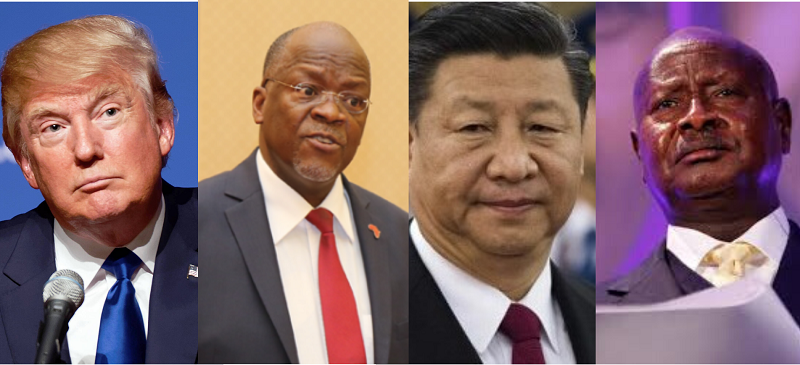“Kalpathy car festival – chariots for the deities”
September 13Centuries-old temples and village processions feature in a time-honoured festival, writes Achuth Menon, 20, a Correspondent from India, as he describes the colourful event.
According to the legends a Brahmin widow, Lakshmi Ammal, brought a Banalingam, a naturally-smooth stone that is a symbol of worship, from Banaras and installed it in Southern bank of the Nila River.
It is said that stone is still at the site. The locale of the Viswanathaswamy Temple and the steps leading to the river resemble the Banaras temple on the bank of Ganges. Hence, the temple is called ‘Kasiyin Pakuthe Kalpathy’, or half-Banaras.
The widow must have consecrated the temple either in the latter half of the 14th century or the first quarter of 15th century, as the stone pillars standing in front of the temple carry details of endowments made to the temple by the ruling Prince of Palakkad Ittikambi Achan in 1438 A.D.
The woman, it is said, gave 100 panams (rupees) to the ruling chief, with the instructions that the mode of worship and celebration there must be along the lines of the Mayuram temple.
That is the origin of the Kalpathy car festival, now celebrated on the last week of the Tamil month of Aippasi.
The festival starts on Aippasi 22 and continues until the last day of the month, attracting people from various parts of the state and abroad. It was considered the biggest festival of the erstwhile Malabar and continues to be so.
The main centre of the festival is the Kalpathy Sree Viswanatha Swamy Temple on the river Nila. The three temples in the villages of New Kalpathy, Old Kalpathy, and Chathapuram also celebrate the festival during this month.
The Koora Edal or hoisting of flag marks the commencement of festival and takes place on the 22nd in all four temples. On the night of the festival’s fifth day, the famous Reshabha Vahanam takes place. In this spectacular event, the deities from all the temples are taken out in decorated cars. They meet at the Western end of New Kalpathy village around midnight, accompanied by performances on Melam, the unique drums of the region, for a two-hour event. Throughout the same time, a regular competition of drummers and pipers takes place, drawing thousands of people from the adjacent villages around Kalpathy.
On the fifth day – Aippasi 28 – the deities of the Viswanatha Swamy temple are installed in three cars. The first is for the main deity Sree Viswanathaswamy and his consort Goddess Parvathi, the second is for Vigneshwara, and the third is for Lord Subramaniya Swamy.
The chariots set out for the village procession around 10a.m. After going around the village, the three chariots return to the base by the evening of the 30th. The deity of the New Kalpathy village, Maha Ganapathy, is also taken through the streets of the New Kalpathy village at this time.
On the concluding day, the deities of the Old Kalpathy and the Chathpuram temples start on a village procession. In the evening all the chariots return to the bases and abhishekams – pouring of libations and worship – are performed. The deities are redecorated, and again taken out in a procession, carried on plananquins with floral decoration. That procession begins around midnight, and returns to the temple by dawn on the first day of the Tamil month Kathikai, coinciding with the Kadamukham festival in Mayuram.
Hence the festival is based on the Vedic Tamil Brahmin culture. The Tamil Brahmins who migrated to Palghat in the 14th century established as many as 96 Agraharams or Brahmin quarters in the district and 18 in the town. All the agraharams have temples. The festival starts at Kalpathy in the last week of Aippais and ends with the festival in Tirunellai village in the second week of Vaikasi. In fact, the festival is spread over nearly six months in the agraharams at one village or another.
…………………………………………………………………………………………………………………
About me:
I am a graduate in commerce from the University of Calicut, with a diploma in journalism. At present I am a reporter for Associated News of India based at Palakkad, which serves print, electronic, and web-based media in different parts of the country.
I have inherent passion, dedication and enthusiasm. My motivation as a journalist is to give coverage of the oppressed and suppressed that will bring their challenges and issues to the attention of people at the helm of affairs.
…………………………………………………………………………………………………………………
Opinions expressed in this article are those of the author and do not necessarily represent the views of the Commonwealth Youth Programme. Articles are published in a spirit of dialogue, respect and understanding. If you disagree, why not submit a response?
To learn more about becoming a Commonwealth Correspondent please visit: http://www.yourcommonwealth.org/submit-articles/commonwealthcorrespondents/
…………………………………………………………………………………………………………………





